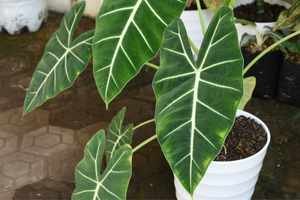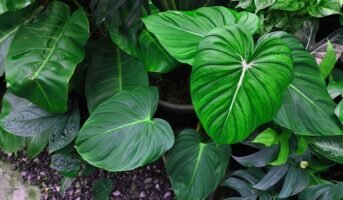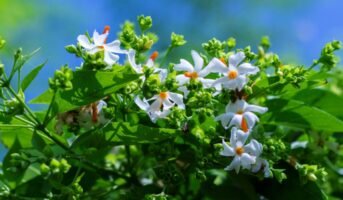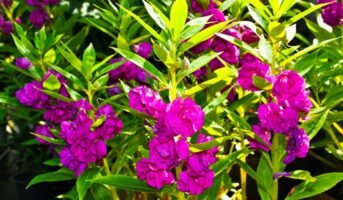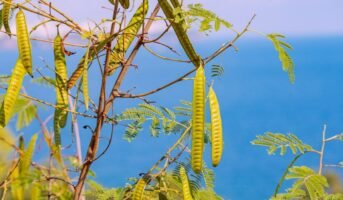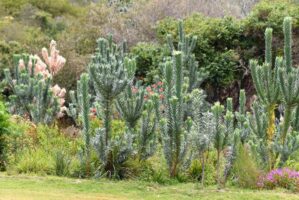Alocasia is a flowering plant that looks attractive due to its broad, heart-shaped leaves. Commonly known as elephant’s ear, Alocasia can be an eye-catching element in your living room or home garden. It is an ornamental plant available in hybrids and other varieties. If you plan to grow Alocasia plant at home, make sure its soil, water, and sunlight needs are proper. Here is the guide to grow and maintain the plant at home.
See also: Zinnia elegans varieties and plant care tips
Alocasia: Quick facts
| Plant name | Alocasia spp |
| Common names | Elephant ear |
| Family | Araceae |
| Found in | Asia and eastern Australia |
| Flower | Light butter-yellow flowers |
| Foliage | Large heart-shaped, or slim arrowhead-shaped leaves |
| Flower blooming season | Spring and summer |
| Benefits | Ornamental use |
known about Elephant Ear Plant
Alocasia varieties: Best types of Alocasias
Around 100 species of Alocasia plants are available, and most of them can be kept as houseplants. Nearly 90 accepted species of Alocasia are found in tropical and subtropical Asia and eastern Australia.
Some of the varieties are mentioned below:
- Longiloba (Tiger taro): This variety of Alocasia plant has dark greyish, green foliage with white veins. It reaches a maximum height of around three feet.
- Macrorhiza (Giant taro): Macrorhiza is among the popular and largest houseplant varieties of Alocasia. It grows up to 15 feet in height with three-to-four-feet long leaves.
- Amazonica (Polly alocasia): Amazonica species of Alocasia is a compact 18-inch plant and characterised by wavy, arrow-shaped red leaves.
- Cuprea ‘Red Secret’: This variety is three-feet-tall and knowns for its metallic bronze-red leaves.
- Alocasia ‘Zebrina’: This is a hybrid variety that grows to have arrow-shaped leaves and leggy, zebra-like stalks. Typically, it exists as a small plant and may grow large over a period.
- Reginula ‘Black Velvet’: This is a compact variety known for its dark green leaves and white veins and grows up to 18 inches in size.
- Alocasia amazonica ‘Bambino’: This is a dwarf variety of the Alocasia plant, which reaches a maximum height of 12 inches. The growing conditions of this plant are similar to those of other varieties. It can thrive in high humidity.
- Alocasia amazonica ‘Ivory Coast’: This is fast-growing variety of the plant, which grows up to a maximum height of 30 cm and width of 20 cm.
- Alocasia micholitziana ‘Frydek’: Alocasia Frydek is another popular variety of the Alocasia plant and thrives in optimum levels of water, light and soil. Make sure the plant receives adequate moisture and regular watering. It thrives well in high humidity levels.
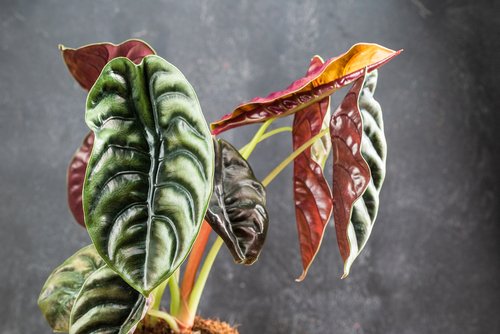
Alocasia: Plant care
The plant has a short growing season in northern region type of climate, but it grows rapidly. They produce new leaves every week and each leaf may be twice bigger than the previous week’s leaf. In its dormant period, the plant starts resting and the fast growth stops.
Sunlight
The Alocasia plant has varying needs from shade to full sunlight, based on its variety. Leaf colour is likely to be better in plants that grow best with maximum sunlight. Alocasia species survive in shade and bigger varieties may be trained to withstand the full tropical sun.
Soil
Grow the plant in loose, well-drained potting mix. You can also use crumbly loamy soil. Alocasia plant prefers slightly acidic soil, available in a standard peat-based potting mix.
Water
The plant must be kept moist throughout the year. However, do not allow it to get soggy. In winter, when it is dormant, it has less water requirements. Before watering the plant, make sure the top surface up to a few inches is nearly dry.
Temperature and Humidity
Some varieties of the Alocasia plant do not thrive in cold weather and re-sprout from the rhizome. Hence, the plant should not be exposed to temperatures below 15 degrees Celsius. They thrive well in humid environment. Keep the plant in a tray filled with pebbles and add water till it rises to little below the bottom of the container. It will help increase the humidity. Do not keep the plant exposed to cold air drafts from windows, doors, and air conditioning.
Fertiliser
Large specimens of the plant may have high fertiliser needs. Provide it with liquid fertilizer once or twice a month. A 20-20-20 formulation is ideal for the plant in growing season.
Pruning
Regularly trim the dry leaves of the plant and allow new leaves to appear.
How to grow Alocasia plant?
It is easy to propagate Alocasia by root division. Thus, seed propagation is usually not done. However, a mature plant produces flowers and seed pods. You can extract seeds from dried pods. Then, plant them in a container with rich, peat-based potting mix. Sow the seeds and add a thin layer of additional potting mix over the surface. Make sure you keep the potting mix slightly damp, not soggy, till the time they sprout.
FAQs
How poisonous is Alocasia?
Alocasia may be toxic and dangerous if ingested. Thus, it should be kept away from children and pets.
What are the common problems with Alocasia?
You may see yellowing of leaves due to excess, or less watering, or lack of sufficient sunlight. They may also turn yellow if they are grown in a small pot and repotting may be required. Similarly, the leaves may shrivel or droop due to the lack, or excess of sunlight, or fertilizer.
How long does Alocasia plant live?
The lifespan of elephant's ear plant depends on its variety. With proper care and maintenance, it can thrive for several decades.
Harini is a content management professional with over 12 years of experience. She has contributed articles for various domains, including real estate, finance, health and travel insurance and e-governance. She has in-depth experience in writing well-researched articles on property trends, infrastructure, taxation, real estate projects and related topics. A Bachelor of Science with Honours in Physics, Harini prefers reading motivational books and keeping abreast of the latest developments in the real estate sector.
